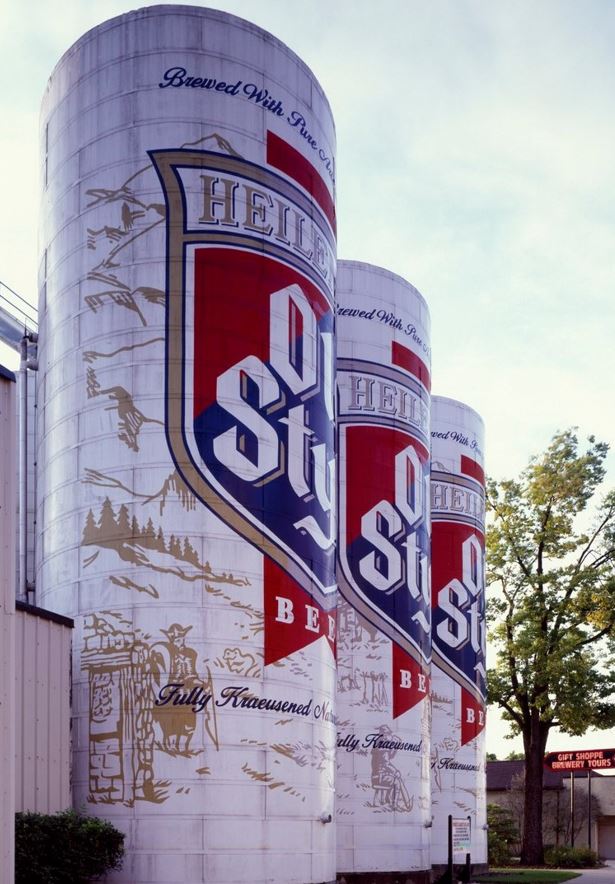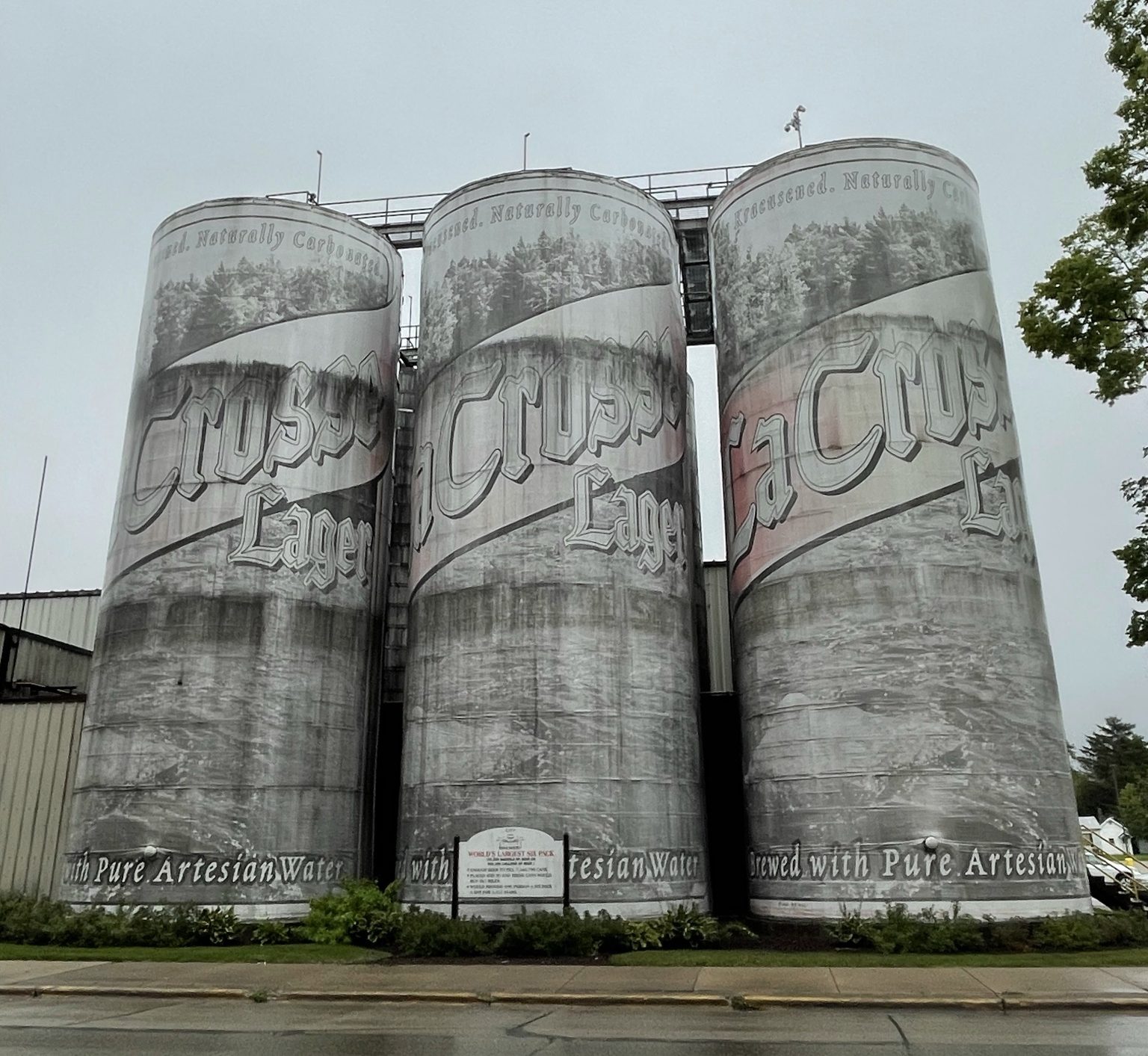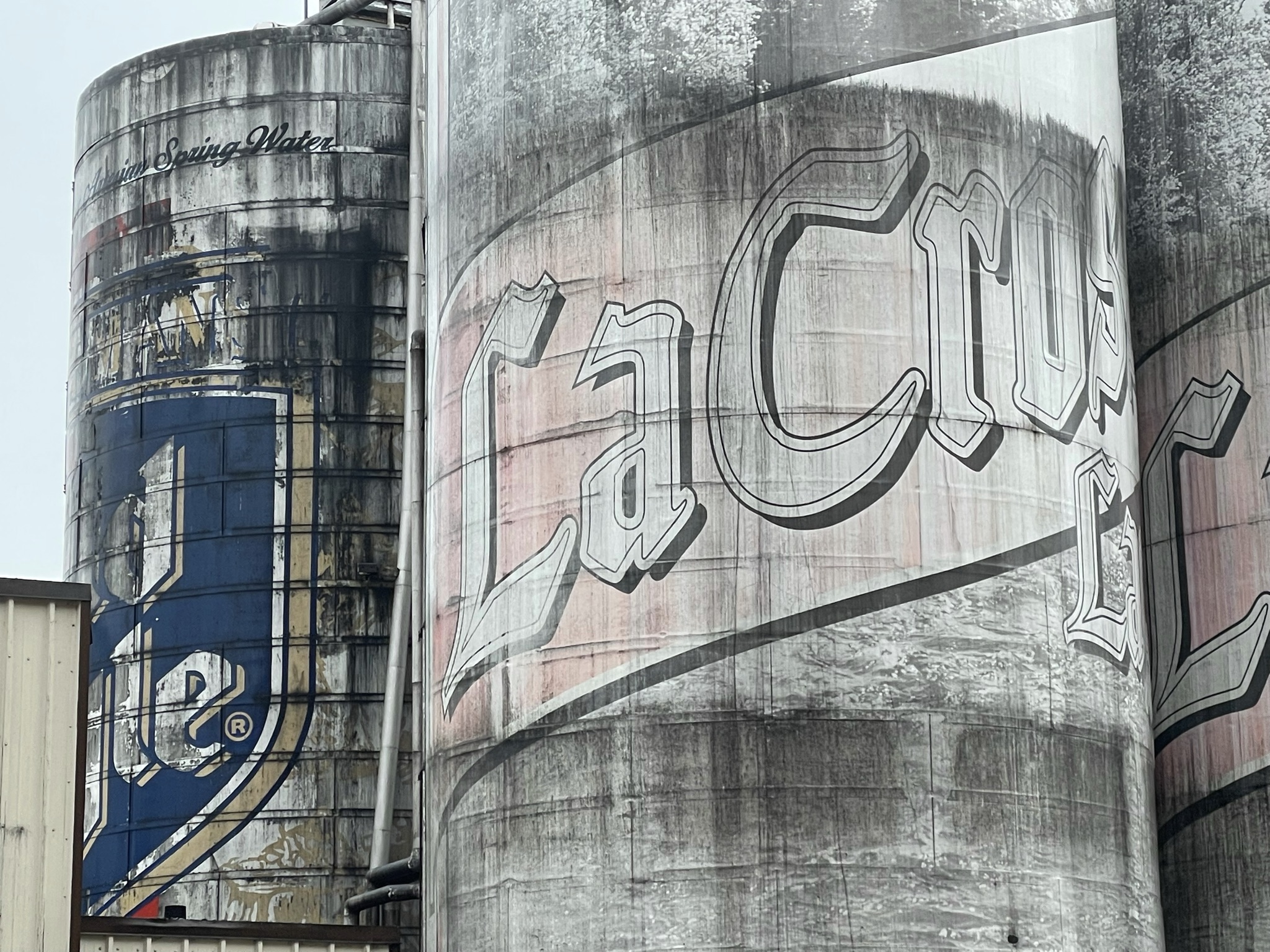
Located in La Crosse, Wisconsin, the “World’s Largest Six-Pack” is a popular tourist attraction and landmark structure representative of the city’s renowned brewing history. At 54 feet tall, the six steel storage tanks, shaped and arranged to resemble a six-pack of beer, tower above the city skyline and hold an impressive 22,000 barrels of beer.[1] As advertisements for the popular attraction boast, that’s enough beer to fill 7,340,795 ordinary cans or, enough for one person to drink a six-pack a day for 3,351 years.[2]

The G. Heileman Brewing Company originally built the Six-Pack next to its La Crosse brewery to function as storage tanks for the facility’s beer in 1969.[3] Heileman painted the tanks as an advertising strategy to reflect the city’s history as the home of the brewery and its flagship brand, Old Style. The iconic label’s vibrant blue shield outlined in gold and intersected by a red ribbon is easily recognizable against the sharp white background of the tanks. The logo is paired with the brand’s slogan, “Heileman’s Pure Genuine Old Style” in a classic typeface.
After Heileman’s closure in 1996, new investors acquired the former facilities under the name City Brewery in 1999 and whitewashed the Six-Pack. The tanks remained blank throughout a brief period of financial troubles during which the brewery changed hands.[4] Eventually, City Brewery plastic-wrapped four of the six tanks with vinyl covers of their La Crosse Lager label. The colorful design depicts a pristine landscape with a bold red ribbon declaring the brewery’s new brand.[5]

While the labels reflect different artistic approaches, they both follow a similar advertising strategy. Each company designed the Six-Pack to emphasize the artesian water sources and krausening process, a German term for the addition of actively fermented wort to induce fermentation in a batch of beer, which produce their high-quality brews.[6] Thus, the Six-Pack reflects pride in the abundant natural resources and rich brewing history characteristic to La Crosse. In 2003, City Brewery unveiled its new labels in a ceremony preceding Oktoberfest and City Fest, two annual festivals that celebrate the city’s brewing culture and serve as profitable tourist attractions.[7] Consequently, the “World’s Largest Six-Pack” accentuates the reciprocal connection between the city’s brewing and tourism industries.

Written by Isabella Lisak, August 2021.
FOOTNOTES
[1] Wisconsin Historical Society, Wisconsin Architecture and History Inventory, “World’s Largest Six-Pack,” “La Crosse,” “La Crosse,” “Wisconsin,” “242971.”
[2] G. Heileman Brewing Co., Inc., “Postcard,” La Crosse County Historical Society, accessed June 28, 2021, https://lchshistory.pastperfectonline.com/archive/C0036CDB-35B2-403A-BF07-919643484229.
[3] Susan T. Hessel and Gayda Hollnagel, A History of La Crosse, Wisconsin in the Twentieth Century: Reinventing La Crosse Again and Again (La Crosse County Historical Society, 2007).
[4] Robert Imrie Associated Press, “Big Trouble Brewing; La Crosse Fights to Maintain Beer-Making Heritage,” Capital Times (Madison, WI.), July 26, 2000, https://advance-lexis-com.ezproxy.library.wisc.edu/api/document?collection=news&id=urn:contentItem:40TV-KMY0-0094-407Y-00000-00&context=1516831.
[5] “Restoration of ‘World’s Largest Six-Pack’ Signals Vitality of City Brewery,” PR Newswire, September 19, 2003, https://advance-lexis-com.ezproxy.library.wisc.edu/api/document?collection=news&id=urn:contentItem:49K2-HFH0-010D-R21K-00000-00&context=1516831.
[6] Dan Allegretti, “Beer is way of life in God’s country,” Madison Capital Times, June 15, 1978, 28, Newspaper Archives.
[7] Ed Hoskin, “Big six-pack to look like itself again,” Madison Wisconsin State Journal, September 21, 2003, 135, Newspaper Archives.




